Experience Spiritual Calm At The Dakshinamurthy Temple

Are you longing to visit a destination with a thick air of religious calm and spiritual enlightenment? If you find yourself nodding, then you may visit the Dakshinamurthy Temple without any second thoughts. Away from busy city life, this temple offers a gateway to self-belief, meditation and an incarnation of positivity. Also, the temple has tales to explore and spots to see. Let’s unravel it here in this blog.
A Travel Guide to The Dakshinamurthy Temple
Travelling to a place as divine as Dakshinamurthy Temple can be a life-changing experience. But to make the most of your travel, you must know where to look for better things. This travel guide will help you righteously explore the temple. Let’s check out the most important things to do at Dakshinamurthy Temple.
1. Address Things That Make Dakshinamurthy Temple Special

Located at Niranam, Pathanamthitta District, Kerala state, India, on the banks of the Pampa River, Dakshinamurthy Temple is an ancient Hindu temple devoted to Lord Shiva. Also known as Niranam Thrikkapaleeswaram Dakshinamurthy Temple, this is one of the best examples of Dravidian architecture. Dakshinamurthy, an aspect of Lord Shiva who serves as a guru (teacher) of all knowledge, is believed to reside at the temple.
The deity of Thrikkapaleeswaram is located facing eastward in the main Sanctum Sanctorum. Folklore states that the idol was placed by the sage Parasurama. The temple is one of Kerala’s 108 well-known Shiva temples. It is also among the three temples listed in Thrikkapaleeswaram. Two other temples are located in the districts of Kozhikode and Kannur, in Peralassery (Kadachira Sri Thrikkapalam Siva Temple) and Nadapuram (Nadapuram Iringannur Shiva Temple).
Significance: Religious- The temple is dedicated to Lord Shiva
Must Read: Mysore to Kerala Road Trip
2. Know the History of Dakshinamurthy Temple

Dakshinamurthy Temple is an ancient Hindu temple. However, what makes it more important is its historical significance. At Niranam, the temple is situated at the confluence of the Pamba and Manimala rivers. Here, Vidya Deva Dakshinamurthy is believed to be thinking about Thrikkapaliswaran in his thoughts.
During the time of the Niranam poets (Kannassa Kavikal), the temple and the surrounding area were well-known. The long period had taken a toll on the structure of the complex. However, the well-known astrologer Kanippayyur Shankaran Namboodiripad performed a “deva prashna” recently for the temple’s renovations. The Shiva lingam is one of the main draws here. The Shiva lingam is a special feature found only in the Himalayas. In the main Sanctum Sanctorum, the major idol residing belongs to the Kapaleeshvaran Dakshinamurthy. The deity is facing east.
Significance: Historical – The temple has undergone renovations
3. View the Statues of Sapta Mathas
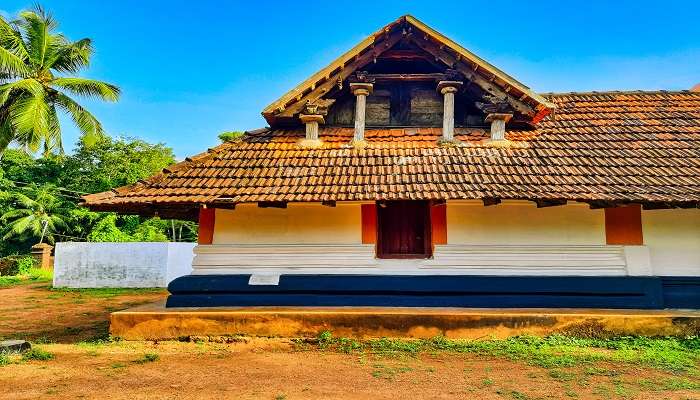
As per Hindu mythology, the Mathas represent mothers. Sapta Mathas means seven mothers. In the temple, aside from the dedicated statues of the Dakshinamurthy, there is an established space where you can find the individual statues of seven mothers called Sapthamatha. The status is established in a separate Sanctum Sanctorum. This type of relevance is hardly seen in any other temple in the region.
Usually, seven Balikalu can be seen in the most southern temples of Sreekovil. Here in Dakshinamurthy Temple, the Sapthamathas are given high importance. Special offerings are organised for them during noon, evening, and morning. Notably, Saptha Mathas are the various incarnations of Adi Parashakti. The names of the deities, in no specific order, are Chamundi, Brahmani, Kaumari, Indrani, Varahi, Maheshwari, and Vaishnavi.
Significance: Religious and Mythological – Saptha Mathas are given high importance
Suggested Read: Munnar to Vagamon Road Trip
4. Dakshinamurthy Temple Timings
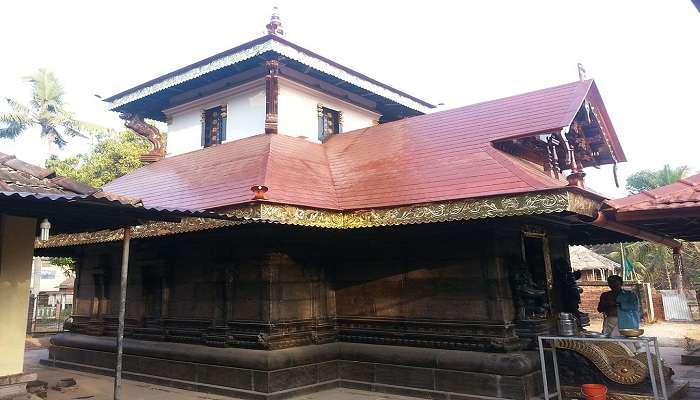
The Dakshinamurthy Temple is usually open all day. A consistent influx of visitors makes this temple a busy place, especially during festivals. The major festival celebrated here is Mahashivratri. The day is celebrated as the occasion when Shiva married his consort, Parvati.
During usual periods, the temple opens at 5:15 AM. Then, it closes after morning Puja and reopens at 10:30 AM. After this, it opens for evening prayer at 5:00 PM. Lastly, it closes after evening prayer, which is held at around 7:30 PM. While these are the ideal timings, they may vary according to the season of the year.
Timing: The temple opens at 5.15 and closes at around 8.30
5. Know All About the Temple Rules
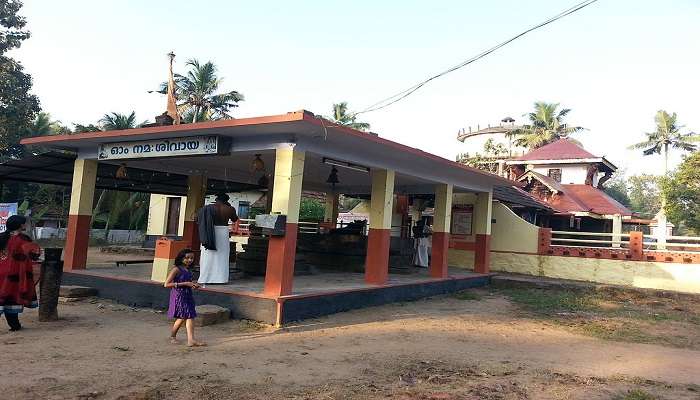
Just like any other temple in India, the Dakshinamurthy Temple follows rules. These rules are abided by travellers if they want to visit the temple and pray in proper harmony with the religious ethos followed here. The priests here ensure that these rules are followed to maintain the decorum and serene atmosphere of the temple. Though these rules are never imposed, it’s a good gesture to follow them so as not to hurt anyone’s religious sentiments.
One should always bathe and wear clean clothes before entering the holy temple. The temple’s website can be accessed for online booking. Devotees can use debit or credit cards to book the Puja. Women should wear ethnic dresses. Salvar sets, and other forms of modern dresses are not allowed in the temple.
Suggested Read: Hyderabad to Kerala Road Trip
6. Learn About the Deities and Religious Ceremonies
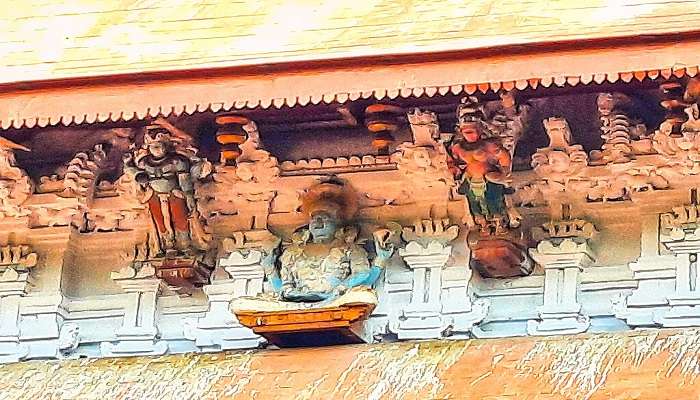
There are plenty of deities residing in the temple. All of these are properly taken care of as a normal human being. The main deities are that of Shiva and Dakshinamurthy Temple. Other deities include Saptha Mathas, Ganpathi, Shivan and Parvathi. All of these are prayed to daily.
Various types of prayers are organised in this temple. Devotees can also book any type of prayer on the temple’s website. The main prayer here includes Dosha Parihara, which removes any bad habits or omens from one’s life. Another popular one is Vighna Nivarna, done to remove obstacles from one’s life. Then, Vidya prayer is done so as to increase the flux of knowledge in one’s life, making him succeed in his field. Besides these, children’s prayer and a usual daily prayer are also held.
Further Read: Guruvayurappan Temple
Are you feeling the devotional and spiritual energy already? That is the type of essence Dakshinamurthy Temple bestows upon you. As you step through this place, you will be enveloped in the ambience of tranquillity. When you pray to the deities, you will realise that life is good and overcoming obstacles is quite easy. To prepare for this spiritual enlightenment, you must visit the temple in person and see the magic yourself. Plan your trip to Kerala and embark on this spiritual journey.
For our editorial codes of conduct and copyright disclaimer, please click here.
Cover Image Source: RajeshUnuppally for wikimedia commons
Frequently Asked Questions About Dakshinamurthy Temple
Where is Dakshinamurthy Temple?
The Dakshinamurthy Temple is situated at the beautiful banks of the Pampa River. It is located at Niranam in the Pathanamthitta district of Kerala, South India. The temple is a fine example of age-old Dravidian architecture. Its strategic location along the banks increases its allure and magnificence. Interestingly, there are various other temples also in India with the same name. There is a smaller Dakshinamurthy Temple in Hyderabad and a bigger one in Vadodara, Gujarat as well.
What are a few amazing facts about the Dakshinamurthy Temple?
The beautiful temple offers a spiritual atmosphere in the lap of nature. The temple is dedicated to Shiva but is also known for Dakshinamurthy. The deity represents Shiva and is known to teach music, yoga and wisdom. Dakshinamurthy is usually worshipped as the god of wisdom and music as per Hindu Mythology.
Which state in India has the highest number of temples?
More temples can be found in Tamil Nadu than in any other Indian state. The media has appropriately dubbed Tamil Nadu 'the land of temples' because it is home to over 400,000 Hindu temples. Scattered around the state, several date back at least 800 years. These temples were built over centuries by the leaders of many kingdoms. Tamil Nadu's temples are best described by their vimanas, or stories and gopurams, or towering entrances to the temple complex.
What is the importance of Dakshinamurthy as per Hindu Astrology?
Lord Dakshinamurthy is the Guru form of Lord Shiva. He is standing with his right foot (12th) on Apasmara, the natural Vrischik rashi of the eighth house. The zodiac associated with Dakshinamurthy is comparable to blind spots or a deep, dark well in your life, from which only a guru can rescue you if you fall. This rashi is Jala and all Jala rashis are memory-carrying (see out Dr. Masaru Emoto's water-carrying memory tests). 'Apasmara' also refers to the ideas of neurological disorders-related Ayurvedic illness. The subconscious mind, which is governed by the 8th house and its corresponding Bhavat Bhavam, the 3rd house, is programmed by our karmas from previous lives. Note that Apasmara is holding a snake, which stands for Maya (illusion) and that Ketu, the half-snake, is the co-lord of Vrischik Rashik.
What is the best time to see Dakshinamurthy Temple
While the temple can be visited any time of the year, its best to visit here during the festive season nearing November. Visits during Mahashivratri will also be preferable if you want to see the spiritual essence.
People Also Read:
Famous Temples in Kerala Heritage Places in Kerala Homestays in Varkala
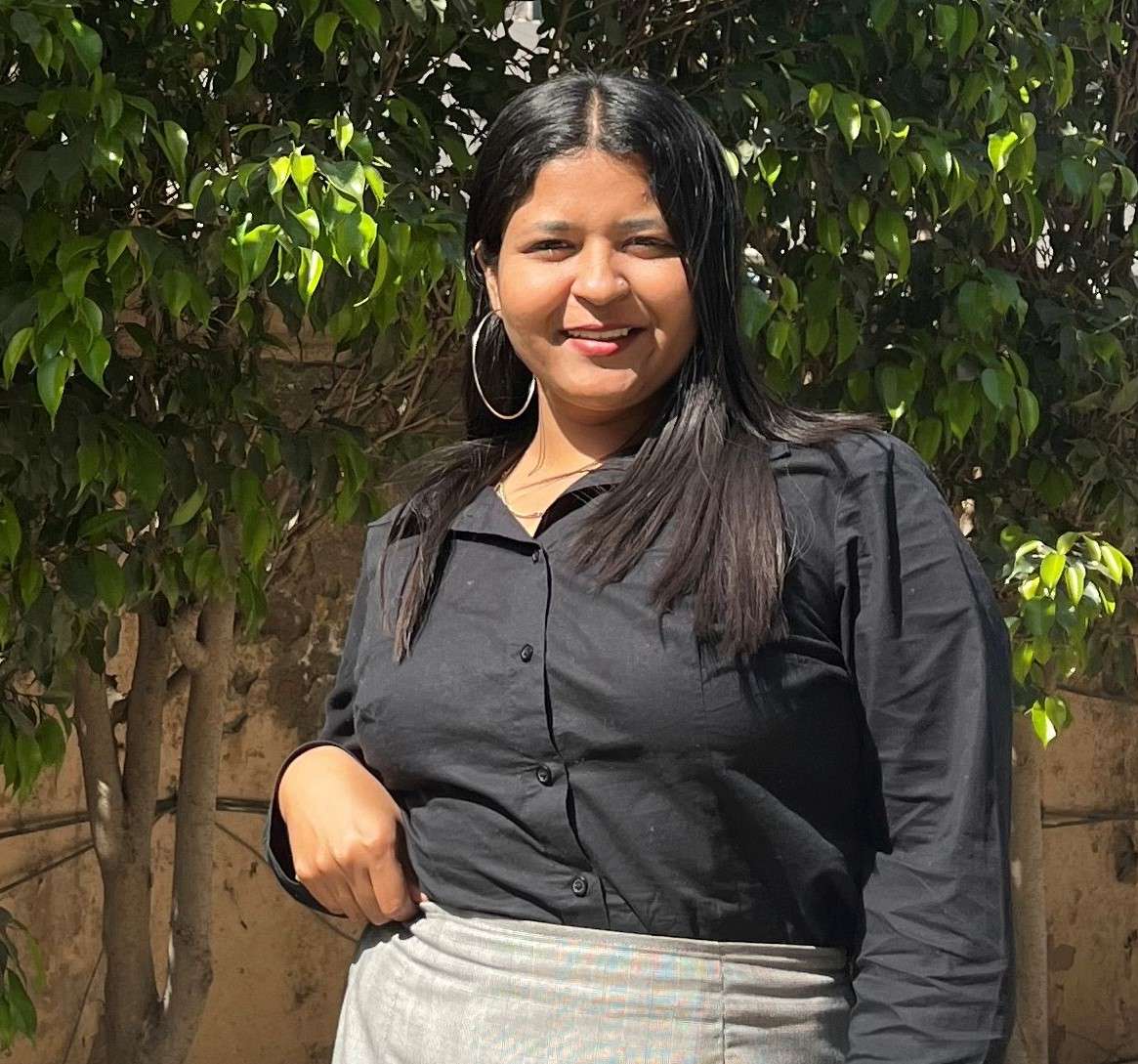
Embrace the essence of surreal places around the world through perfect narratives with a touch of imagination. As a content writer, I weave my ideas and words together to create a vivid picture of alluring destinations. Embark on limitless adventures as you read thrilling travel stories.











